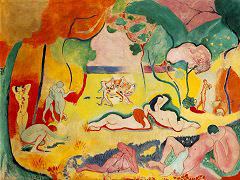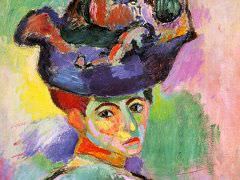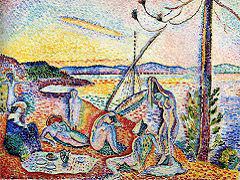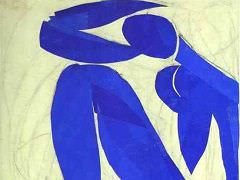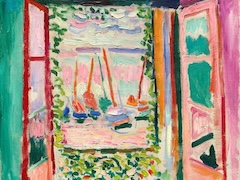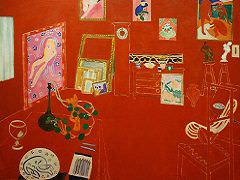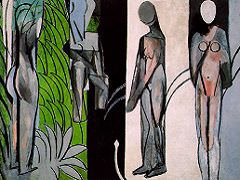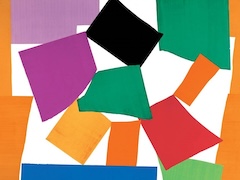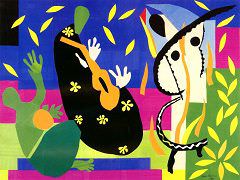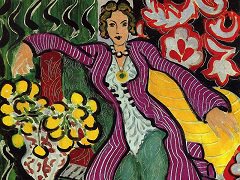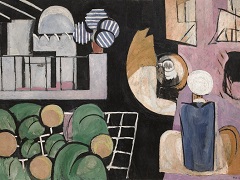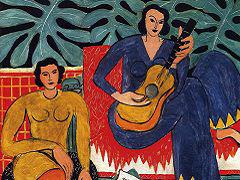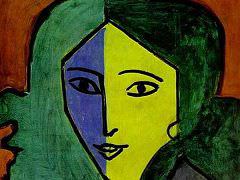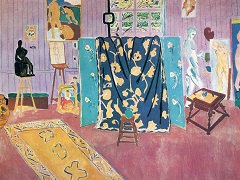The Dessert: Harmony in Red, 1908 by Henri Matisse

The dessert: harmony in red (The red room), 1908, is considered by some art historians to be Matisse's masterpiece. Matisse was greatly influenced by the Post-Impressionists, Van Gogh, Gauguin, Paul Cezanne, and Van Gogh was an ardent admirer of Japanese art and motifs. He developed his style using areas of flat, brilliant and often unnatural colour and invariably outlined his forms in a manner similar to Van Gogh. This fauvist painting, like Impressionists Claude Monet, has no central focal point. The painting initially was ordered as 'Harmony in Blue,' but Matisse was dissatisfied with the result, so he painted it over with his preferred red.
In his Paris studio with its windows looking out over a monastery garden, in 1908 Matisse created one of his most important works of the period 1908-1913. The artist himself called this a "decorative panel" and it was intended for the dining room in the Moscow mansion of the famous Russian collector Sergey Shchukin.
Matisse turned to a motif common in the painting: a room decorated with vases, fruits and flowers. Yet, as he wrote in 1908, "the basis of my thinking has not changed, but the very thinking has evolved and my means of expression have followed on." The luxuriant raspberry red fabric with its energetic twists of blue pattern seems to sink down from the wall, taking over the surface of the table and uniting it in a single whole, swallowing up the three-dimensional space of the room and masterfully confirming the decorative potential of the canvas surface.
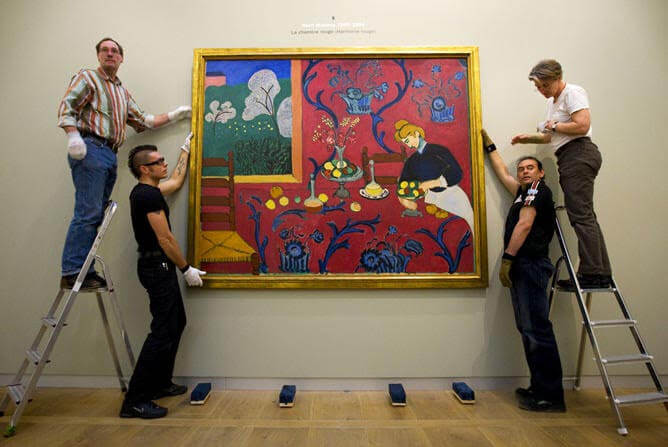
Matisse first made such uncompromising use of this compositional device here, in L'Atelier Rouge. But in affirming the flatness of the red colour, the artist managed to create within it the impression of space, space within which the female figure bending over the vase could move and within which the sharp angled view of the chair seemed natural. The window, through which we see a green garden with flowering plants, allows the eye to move into the depths of the canvas. L'Atelier Rouge is a brilliant celebration of pattern and decoration. The rhythms of the foliage pattern on the tablecloth and wallpaper are echoed in the background through the window, uniting the interior with the cooler exterior.

